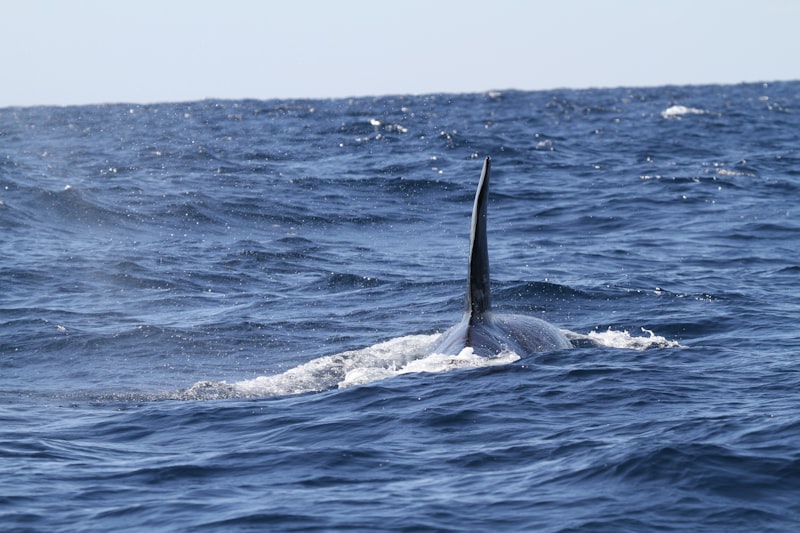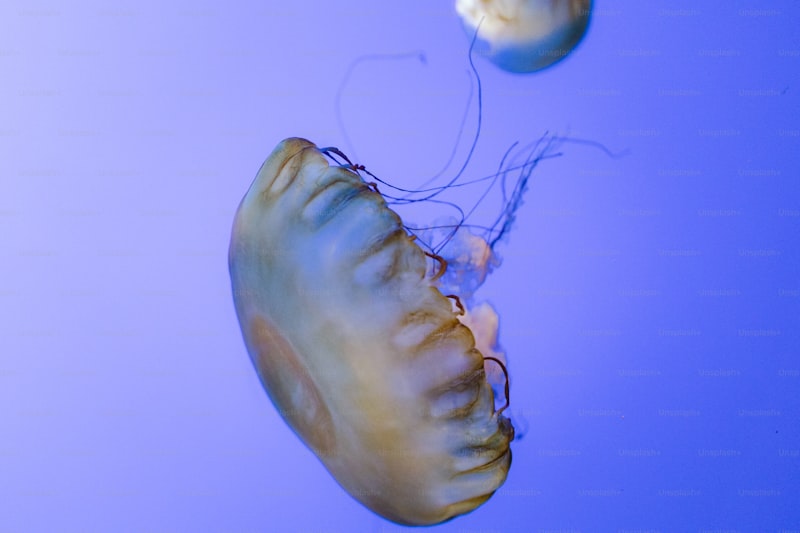Imagine encountering the vampire squid, a creature that seems plucked from a fantasy novel. Despite its intimidating name, this invertebrate sports a cloak-like webbing between its arms, giving it an ethereal appearance as it glides through the water. Its ability to transform into a glowing specter under the dim lights of the deep sea adds to its mystique, leaving researchers enthralled by its adaptations to the extreme pressures of its habitat.
In the depths, the gulper eel reigns as a testament to nature’s creativity. With a disproportionately large mouth, it can swallow prey much larger than itself, earning it the nickname “pelican eel.” Its elongated, snake-like body navigates the abyssal plains with ease, relying on bioluminescence to attract unsuspecting prey in the darkness.
Meanwhile, the dumbo octopus gracefully flaps its ear-like fins, resembling the beloved Disney character. These creatures, found thousands of feet below the surface, epitomize the beauty and peculiarity of deep-sea life. Their delicate movements and soft, gelatinous bodies underscore the fragility of life in such extreme environments.
Delving deeper, we encounter the enigmatic yeti crab, covered in a dense coat of pale, hair-like fibers that cultivate bacteria for its nutrition. This symbiotic relationship exemplifies nature’s ability to adapt and thrive in the harshest conditions, where food is scarce and survival demands innovation.
Each of these deep-sea marvels serves as a reminder of the vast mysteries that lie beneath the waves. Their existence challenges our understanding of life on Earth and inspires us to protect these fragile ecosystems. As scientists continue to explore and uncover new species, the allure of deep-sea marine invertebrates persists, beckoning us to unravel the secrets of the ocean’s depths.
Beyond Belief: Unveiling the Weirdest Deep Sea Marine Invertebrates
Venturing into the depths of the ocean unveils a realm where reality seems to bend, revealing a bizarre world of deep sea marine invertebrates. These creatures, adapted to survive in extreme conditions of pressure and darkness, defy imagination with their peculiar forms and adaptations.
Imagine encountering the Dumbo Octopus, named for its ear-like fins that resemble the beloved Disney character. This deep-sea dweller gracefully floats, using its fins to glide through the water with an almost ethereal presence. Its bulbous mantle and large eyes add to its alien-like appearance, perfectly suited for life in the abyssal plains.
Delve deeper, and you might come across the Vampire Squid, a creature that seems straight out of a horror movie. Contrary to its name, it doesn’t drink blood but rather sports a cloak-like webbing between its arms, giving it a ghostly appearance. It uses bioluminescent organs to produce mesmerizing light shows, perhaps to ward off predators or attract prey in the perpetual darkness.
In the shadowy depths, the Barreleye Fish showcases a head unlike any other. Its transparent dome allows its barrel-shaped eyes to rotate within, giving it a 360-degree view of its surroundings. This adaptation helps it detect the faintest glimmers of bioluminescent prey or potential threats in the murky waters.
The world of deep sea marine invertebrates is a testament to evolution’s creativity and adaptation. From the graceful movements of the Dumbo Octopus to the haunting presence of the Vampire Squid, these creatures challenge our perceptions of life on Earth. Each species has carved out its niche in the abyss, surviving against all odds and leaving scientists and explorers alike in awe of nature’s boundless diversity and ingenuity.
Aliens of the Deep: Strange Marine Invertebrates That Defy Imagination
Have you ever wondered what lies beneath the mysterious depths of our oceans? It’s a world unlike any other, teeming with creatures that seem plucked straight from science fiction. Today, we delve into the realm of marine invertebrates—aliens of the deep that defy imagination.
Imagine encountering the vampire squid, a creature that seems straight out of a dark fantasy. With its cloak-like webbing and bioluminescent tips, it prowls the deep seas with an eerie grace. Despite its name, this squid doesn’t suck blood but instead drifts through the ocean depths, capturing drifting particles with its delicate tentacles.
Then there’s the immortal jellyfish, a marvel of regeneration and longevity. This tiny creature has the remarkable ability to revert to its juvenile form after reaching adulthood, essentially starting its life cycle anew. It’s a true symbol of resilience and the mysteries of life in the deep sea.
Moving on, let’s meet the dumbo octopus, named after the beloved Disney character for its prominent ear-like fins. Found at extreme depths, these creatures gracefully navigate the ocean floor, using their large eyes to spot prey in the darkness. They’re a reminder of the diversity and adaptability of life in our oceans.
And who could forget the yeti crab, with its silky blond fur covering its claws? These crustaceans thrive near hydrothermal vents, where they harvest bacteria for sustenance. They’re a testament to the unexpected habitats where life can flourish, even in the most extreme environments.
Each of these marine invertebrates offers a glimpse into the vast and extraordinary world beneath the waves. They challenge our imagination and expand our understanding of life on Earth. As scientists continue to explore the ocean’s depths, who knows what otherworldly creatures they’ll discover next?
Into the Abyss: Exploring the Most Bizarre Deep Sea Invertebrates
Imagine encountering the Gulper Eel, a creature with a mouth wide enough to swallow prey much larger than itself, resembling something out of a science fiction tale. Its bioluminescent lure dangles in the darkness, attracting unsuspecting prey into its gaping jaws. This deep-sea predator epitomizes nature’s ability to create creatures perfectly suited to their harsh environment.
Then there’s the Vampire Squid, neither a true squid nor an octopus, but a unique cephalopod that inhabits the oxygen minimum zones. With its deep red eyes and cloak-like webbing, it evokes images of mythical creatures. Instead of ink, it releases bioluminescent mucus clouds to deter predators, a defense mechanism evolved over eons in the abyssal depths.
The Dumbo Octopus, named after its ear-like fins resembling the Disney character, gracefully maneuvers through the water with transparent skin that reveals its internal organs. Found at depths of up to 13,000 feet, this creature demonstrates the incredible diversity of life in the deep ocean, adapted to survive where few others can.
In contrast, the Anglerfish lurks in the dark, equipped with a bioluminescent lure atop its head to attract prey. Once ensnared, its fang-like teeth ensure a swift end. This deep-sea predator embodies both the beauty and brutality of the abyss.

Exploring the depths further reveals the Deep-Sea Dragonfish, armed with long, sharp teeth and the ability to emit red bioluminescent light, invisible to its prey. It’s a testament to nature’s ingenuity in creating adaptations that ensure survival in the most extreme conditions on Earth.

These bizarre deep-sea invertebrates challenge our understanding of life forms and remind us of the vast mysteries that lie beneath the ocean’s surface. Each species tells a unique story of adaptation and evolution in a world where darkness reigns and pressures are crushing.
Hidden Wonders: Remarkable Discoveries Among Deep Sea Marine Oddities
Imagine encountering creatures with adaptations so extraordinary they seem alien. Take, for instance, the anglerfish, a master of disguise with a bioluminescent lure dangling from its head like a fishing rod in the darkness. This ingenious adaptation not only attracts unsuspecting prey but also showcases nature’s unparalleled inventiveness.
In these depths, life takes on unexpected forms. Consider the gulper eel, aptly named for its enormous mouth capable of swallowing prey much larger than itself. Its elongated, serpent-like body navigates the abyssal plains with an eerie grace, embodying both beauty and the primal struggle for survival in a harsh environment.
Yet, the deep sea’s marvels extend beyond creatures alone. Hydrothermal vents, akin to underwater geysers, release superheated water laden with minerals, creating oases of life in an otherwise barren landscape. These vents support ecosystems thriving in near-boiling temperatures, challenging our understanding of where life can flourish.
Exploring these hidden wonders requires more than curiosity—it demands courage and innovation. Scientists and explorers alike delve into the abyss armed with advanced technology, unraveling mysteries that have puzzled humanity for centuries. Each discovery adds a new chapter to our understanding of Earth’s vast and interconnected biosphere.
The deep sea remains a realm of endless fascination and discovery. It is a testament to nature’s resilience and adaptability, where even the most peculiar oddities serve a vital role in the intricate web of life. As we continue to explore and protect these fragile ecosystems, we ensure that future generations inherit a world where the wonders of the deep sea continue to inspire awe and wonderment.
Frequently Asked Questions
What is the strangest deep-sea invertebrate discovered so far?
Discover the remarkable world of deep-sea invertebrates with the description of the strangest species found to date. Explore its unique adaptations and biological features that make it a fascinating subject of scientific study.
What are some examples of bizarre marine invertebrates found in the deep sea?
Explore a fascinating world of bizarre marine invertebrates discovered in the deep sea. From the otherworldly Dumbo octopus with its ear-like fins to the eerie yeti crab with its furry claws, these creatures defy imagination. Witness the translucent wonder of the glass squid or the alien-like appearance of the vampire squid. Delve into the depths and discover these extraordinary examples of life thriving in the extreme environments of the ocean’s abyss.
How do deep-sea invertebrates adapt to extreme pressure and darkness?
Discover how deep-sea invertebrates adapt to extreme pressure and darkness. Explore their unique physiological and behavioral strategies that enable survival in these harsh environments.
Where can I learn more about the latest discoveries in deep-sea marine biology?
Discover where to find the latest discoveries in deep-sea marine biology with our concise guide. Explore cutting-edge research and findings from leading institutions and scientific journals. Stay informed on the forefront of deep-sea exploration and biological discoveries.
Why are deep-sea invertebrates important to marine ecosystems?
Deep-sea invertebrates play a crucial role in marine ecosystems by contributing to nutrient cycling, providing food for other organisms, and supporting biodiversity. Their adaptations to extreme conditions also offer insights into biotechnological and medical advancements.


